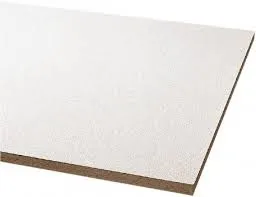Nov . 05, 2024 04:43 Back to list
insulated ceiling access panel
Understanding Insulated Ceiling Access Panels
In modern construction and renovation projects, the importance of efficient thermal insulation cannot be overstated. Insulated ceiling access panels serve as a key component in maintaining energy efficiency while providing convenient access to critical spaces above ceilings, such as HVAC systems, plumbing, and electrical lines. This article explores the features, benefits, and considerations associated with insulated ceiling access panels.
What Are Insulated Ceiling Access Panels?
Insulated ceiling access panels are specialized openings installed in ceilings or walls, allowing for easy access to voids such as attics, ducts, or mechanical spaces. These panels are designed to provide thermal insulation, ensuring that the temperature-controlled environment of the room is not compromised. They are typically constructed from durable materials such as steel or aluminum, with an insulating core often made from polystyrene or polyurethane foam, which enhances their energy efficiency.
Key Benefits
1. Energy Efficiency Insulated ceiling access panels play a significant role in preventing energy loss. Traditional access points can create drafts and allow untreated air to enter controlled spaces, leading to increased heating and cooling costs. Insulated panels minimize this risk by providing a barrier that reduces heat transfer.
2. Convenient Access These panels allow for quick and easy access to essential systems without the need for extensive dismantling of ceilings or walls. Whether it’s for routine maintenance or emergency repairs, the ability to efficiently access hidden areas is vital for property management.
3. Aesthetics Available in various finishes and sizes, insulated ceiling access panels can blend seamlessly with the surrounding structure. This is important in commercial and residential applications where visual appeal matters as much as functionality.
4. Durability Made from robust materials that withstand wear and tear, these panels are designed for longevity. They are built to endure exposure to moisture and other environmental elements, especially in areas prone to humidity or temperature fluctuations.
insulated ceiling access panel

5. Fire Safety Many insulated access panels also come with fire-rated options, contributing to the overall safety of a building. Fire-rated panels can help slow the spread of flames and smoke, providing critical time for evacuation and fire response.
Considerations When Selecting Insulated Ceiling Access Panels
When choosing insulated ceiling access panels, it's essential to consider several factors
- Size The panel must fit the designated opening to ensure a proper seal and effectiveness. Measurement is key during the selection process. - Insulation Value Look for panels with high R-values, which indicate better insulating properties. This is crucial for energy efficiency. - Material and Finish Choose materials that will endure the specific environmental conditions of the installation site. Additionally, consider finishes that complement your ceiling’s decor.
- Installation Professional installation is advisable to ensure that the panels are properly fitted and sealed, maximizing their efficiency and functionality.
- Building Codes Always verify that the chosen panels comply with local building codes and regulations, particularly in commercial settings where safety standards can be stringent.
Conclusion
Insulated ceiling access panels are an integral part of contemporary building designs, contributing to energy efficiency, convenience, and safety. By understanding their features and benefits, as well as considerations for selection, property owners and managers can make informed decisions that enhance the functionality and sustainability of their buildings. Investing in high-quality insulated ceiling access panels is a step toward creating an energy-efficient and user-friendly environment.
-
Durable Ceiling T Grid Systems | Easy InstallationNewsAug.29,2025
-
PVC Gypsum Ceiling: Durable, Laminated Tiles for Modern SpacesNewsAug.28,2025
-
Pvc Gypsum Ceiling Is DurableNewsAug.21,2025
-
Mineral Fiber Board Is DurableNewsAug.21,2025
-
Ceiling Tile Clip Reusable DesignNewsAug.21,2025
-
Ceiling T Grid Modular DesignNewsAug.21,2025







